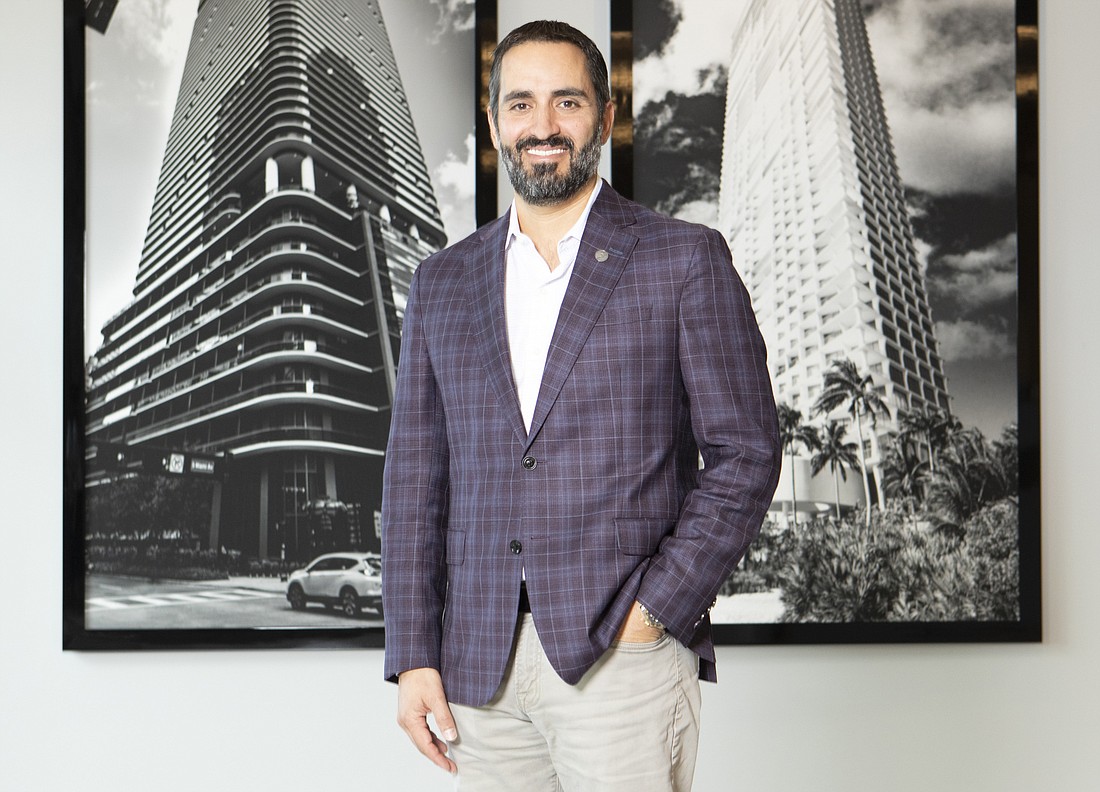- April 11, 2025
-
-
Loading

From the outside, its buildings aren’t as flashy as the glistening tech companies of Silicon Valley. But electric contractor Power Design, with its sprawling, 40-acre campus, known as the GRID, in northern St. Petersburg, has a legitimate claim to being the Google of contractors.
Employees zip from building to building — the structures have themed names such as CORE, FUSE, etc., while the Starbucks-like café is called SURGE — on e-scooters, while the firm’s parking lots are dotted with charging stations for electric vehicles. The vast, two-story gym has basketball, volleyball and pickleball courts in addition to a full wellness center.
“Construction has a legacy of crustiness to it,” CEO Frank Musolino says. “That’s not what we’re about. We want to deliver next-level service and create a place that inspires.”
It’s a winning formula. Power Design has landed $1.19 billion in new contracts in 2022 alone, while its gross revenue for the year is projected to be $925 million, up from $879.8 million in 2021. It’s the designer and builder of infrastructure for a wide variety of high-profile local and national projects, including Red Apple Group’s 400 Central in downtown St. Pete, which will be the tallest residential building on Florida’s Gulf Coast when it opens in 2024. But the firm’s expertise also extends to affordable and student housing and even assisted-living facilities.
“We stay active not just geographically in every market,” Musolino says, “but in every wedge of the pie in every market.”
‘The impetus for our growth is really about the employee. We want to deliver next-level service and create a place that inspires.’ Power Design CEO Frank Musolino
Power Design, though, comes from humble beginnings. Mitch and Dana Permuy founded it in 1989 and initially worked out of their St. Pete home (the Permuys are still involved with the firm as co-chairs). The company’s explosive growth, according to Musolino, 43 — an attorney by training who joined the firm in 2007, right before the recession of the late 2000s — can be attributed to two factors: its intense focus on the multifamily housing market and heavy investment in staff member training.
“The impetus for our growth is really about the employee,” he says. “In my prior role at a very large general contractor, I never saw a place that was like this, to be honest.”
As the housing market and financial sector were collapsing in 2008, Power Design, which today has more than 2,700 employees, went bigger on training instead of resorting to layoffs, investing millions of dollars in a 16,000-square-foot, intricately designed training center that includes interactive exhibits and mock job-sites that simulate various stages of construction. The simulators are riddled with more than 150 mistakes and faults that would go unnoticed by an untrained eye, but Power Design staffers who want to advance their careers are expected to find them.
“It’s everything from code deficiencies to plan deficiencies to best-practice violations,” Musolino says, “and they’re weighted based on severity and implications. So, as we promote internally, they have to become recertified in every discipline and, for new hires, you get an offer letter, but your offer is contingent upon passing” the simulated jobsite tests.
Eye-catching sculptures, paintings, photos and artwork adorn the walls and halls of the GRID, and Power Design’s skilled designers have created displays that showcase the company’s specialty: the intricate — and vital — “guts” of buildings, everything from electric panels and transformers to lattices of pipes and wires.
“In our trade, we’re covered up,” Musolino says. “Everything we do is hidden behind drywall or a door somewhere. So, when we created this space, we wanted to flip that on its head. There’s this idea that construction is a rudimentary, unsophisticated business, when the reality is that anyone who drives by these buildings doesn’t appreciate the amount of technical expertise, due diligence and work it takes. It’s not just stacking blocks.”
Musolino says Power Design isn’t too concerned about an economic downturn or recession because of the “long tail” of its work. Most of its projects take three to five years to complete. “We’re not a consumer-based widget company, so it takes longer to feel mistakes,” he says, “and it takes longer to realize gains.”
A correction in the housing market wouldn’t necessarily be a bad thing, he adds, because it would lead to more work in other subsectors.
“You have to put your head down on a pillow somewhere,” Musolino says. “As the economy grows, you see the progression go from affordable to market-rate condos. When the economy starts to turn, people can't get jobs, so they stay in school longer and student housing swells. Even in 2011-12, there were still thousands of units being built. There’s plenty to live off of."